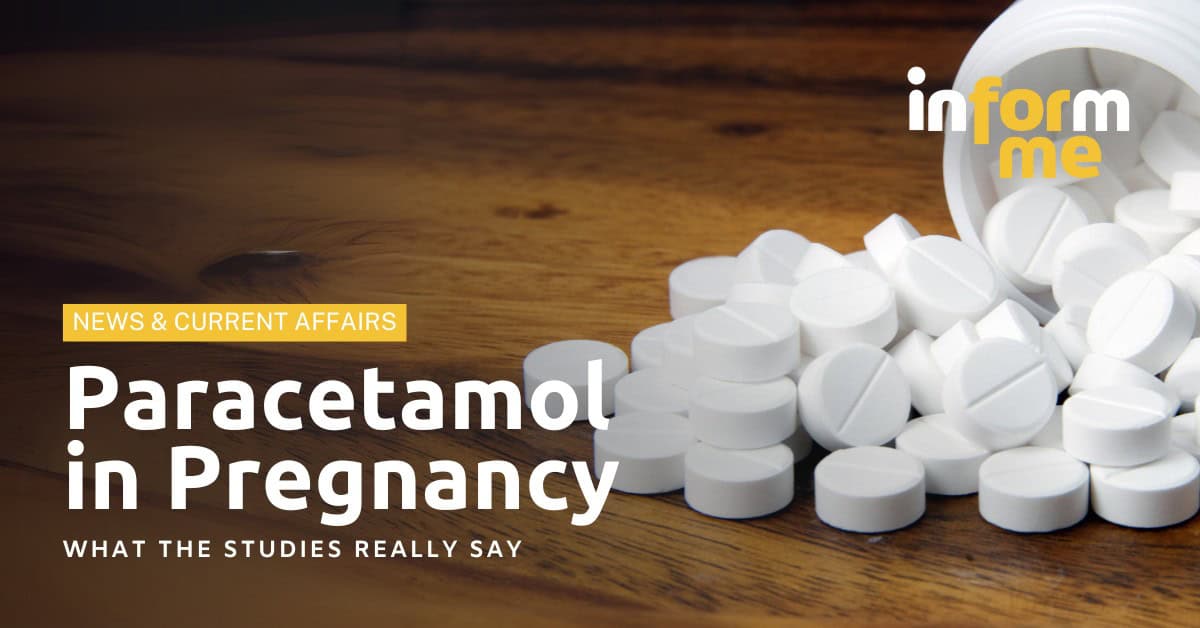A medicine millions rely on
Paracetamol (acetaminophen) has long been recommended as the “safe” choice for pain and fever, even during pregnancy. But decades of research show the story isn’t as simple as many assume. Across multiple studies, scientists have looked at possible links between paracetamol use and outcomes ranging from asthma to blood cancers to neurodevelopmental disorders.
Here we walk through what the research actually found — so you can see why the questions being raised today aren’t new, and why they matter.
Asthma and wheezing
- A 2003 WHO Bulletin study involving more than 200,000 children found that paracetamol use was linked to a dose-dependent increase in asthma symptoms. Children exposed in the first year of life were 46% more likely to have asthma at age 6–7.
- A 2011 paper in Pediatrics reported that infants given paracetamol were significantly more likely to develop wheezing, with the risk rising the more often the drug was used.
Insight: Both studies highlight a recurring pattern: greater exposure appears to increase risk.
Neurodevelopmental outcomes
- A 2012 NeuroToxicology study followed a birth cohort and found prenatal exposure was linked to delayed motor development and higher rates of behavioural problems.
- A 2024 PubMed analysis using large population datasets reported a significant increase in autism spectrum disorder diagnoses among children exposed prenatally.
- Earlier work, including a 2011 PubMed study, had already raised similar concerns about attention and social development.
Insight: While no single study proves causation, the consistency across years and populations strengthens the case for deeper investigation.
Blood cancer risks
- Researchers at the Fred Hutchinson Cancer Research Center published findings in 2011 showing that frequent paracetamol use (at least four times per week for several years) was linked to a twofold increase in blood cancerssuch as lymphoma, leukemia, and myeloma (The Scientist article).
- Coverage of the same study in Deseret News emphasised that the risk was specific to high-frequency, long-term use — not occasional doses.
Insight: This is one of the strongest dose-response findings in the paracetamol debate: the more often it was used, the higher the risk observed.
The bigger picture
The 2011 evidence review in Pediatrics concluded that existing studies were too inconsistent to establish causation, and called for more rigorous research.
This is the challenge: science often produces conflicting results, but when a widely used medicine shows recurring red flags, it is irresponsible to ignore them.
What this means for parents
- The questions are longstanding. Research into paracetamol’s potential risks has been ongoing for over 20 years.
- The risks appear dose-related. The clearest findings show increased risk with frequent or high exposure.
- Occasional use is less certain. Most studies focus on regular or prenatal use, leaving gaps in knowledge.
- Asking questions is responsible. Families should not be told these concerns are “new” — they have been part of the scientific record for decades.
At Inform Me, we’re not here to tell you what choice to make. Our role is to show you the evidence, highlight the debates, and respect your right to weigh the risks yourself.
As regulators in other countries begin fresh reviews, we believe Australians deserve the same: open dialogue, transparent criteria, and gold-standard research into medicines used by millions.
Because when it comes to the health of our children, the most dangerous thing we can do is stop asking questions.

